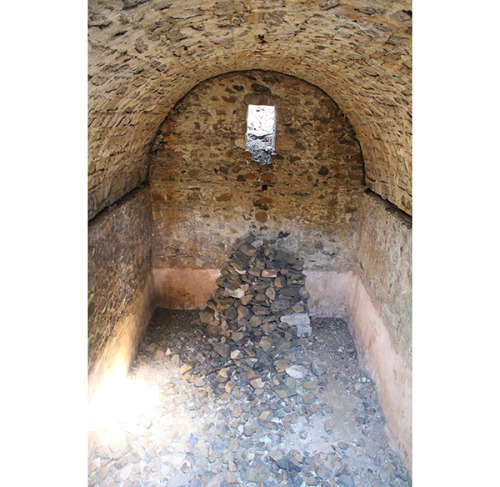
My ANAMED fellowship during the academic year of 2020–2021 provided me a valuable chance to elaborate on my research project entitled “A Neglected Heritage: The Intertwined Pre-1923 Agricultural, Industrial, and Sacred Landscape of the Ayvalık Countryside.” I focused on the abandoned monuments outside of settlement centers in the Ayvalık region that once belonged to its Greeks residents who emigrated following the Turkish War of Independence (1919–1923) as part of mandatory population exchanges. These include monasteries, chapels, windmills, agricultural terraces, barns, lighthouses, salt pans, and fishponds on both the mainland and the uninhabited islands that surround Ayvalık. Almost all the monuments were left unoccupied after 1923, and were therefore neglected, ruined, and also vandalized over time. In this way they have become unidentified ruins with completely forgotten histories.
With the help of written primary sources and previous field missions, I was able to rediscover and identify a significant number of the monuments. Because of Covid-19, I had limited yet fruitful field missions; above all the remote fellowship system this year allowed generous opportunities to access rare primary sources and to focus on archival documents. I was able to study 2 monasteries, 15 chapels, 15 windmills, 8 agricultural and animal husbandry islands, 2 lighthouses, and 1 salt pan and fishpond in detail from an architectural and historical point of view. On one hand, my research resulted in a novel cultural heritage inventory of rural buildings that were previously covered by neither the literature nor the national conservation legislation. On the other hand, this research sheds light on the relationship of the former Greek community of Ayvalık with the countryside in the context of land use, agricultural activities, routes, and regional limits that no longer exist. Building on these outcomes, a region that is internationally renowned for its architectural heritage, specifically in settlement centers and most recently through its inclusion on the UNESCO World Heritage Tentative List (though in a selective manner that only covered the olive oil industry), gained a new horizon. Although its countryside has a public and academic perception of being a natural protection area with a few monasteries, it evidently includes hidden architectural heritage. In this case, the outcomes of my research will hopefully have another impact from a conservation point of view, as many of those monuments are nowadays at serious risk due to decay and constant vandalism. I am currently reediting this research as a book chapter to be published soon in the first volume of the Adramytteion Archaeological Field Surveys and Excavations (2012–).

